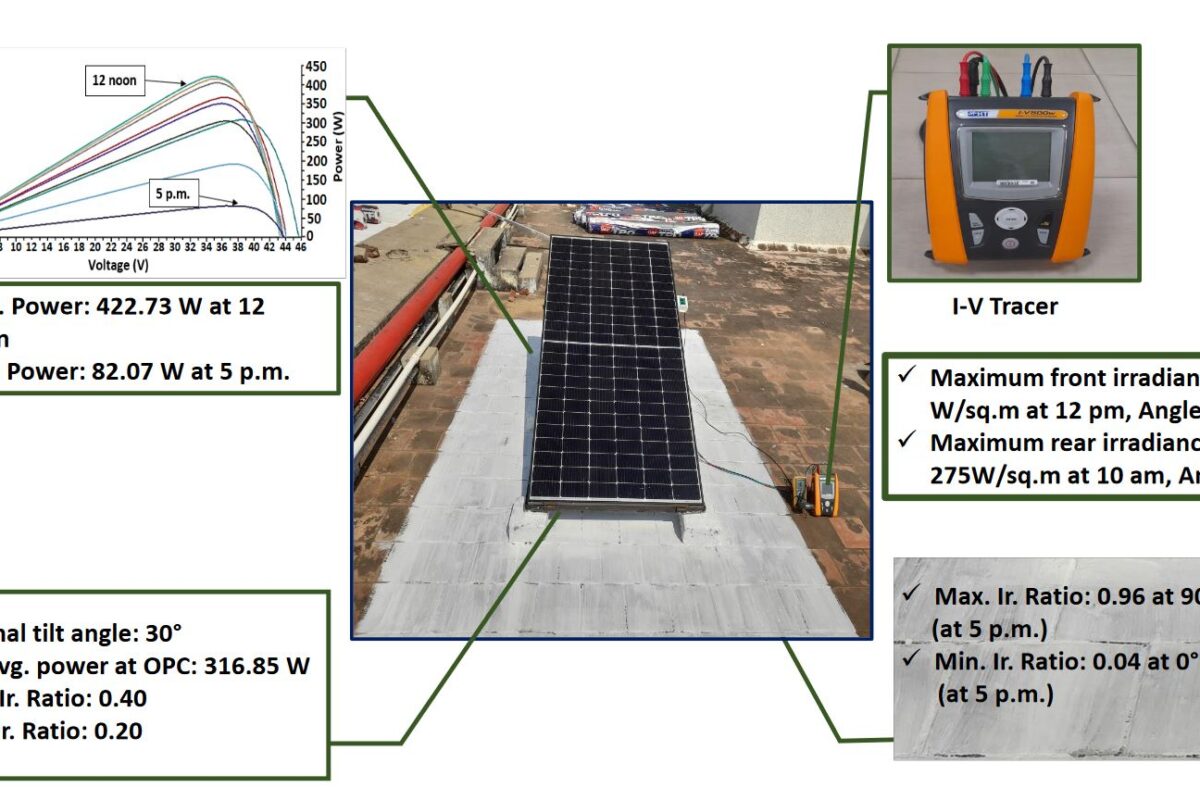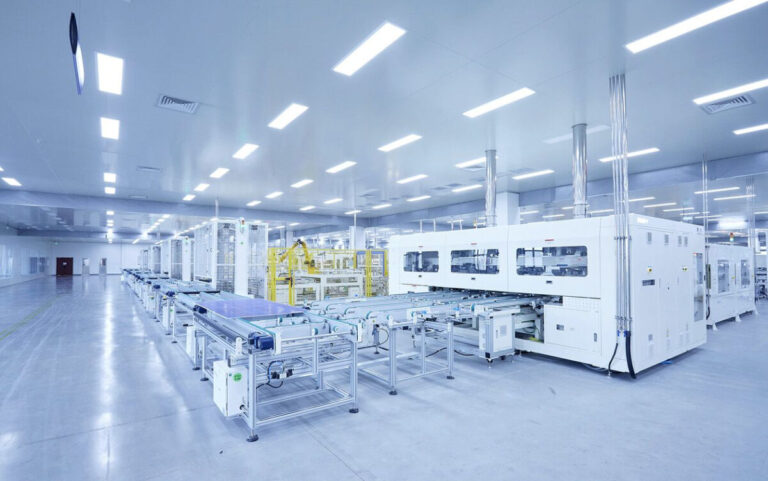Results from PV test laboratories in 2024 have raised concerns about ultraviolet-induced degradation (UVID) in some n-type TOPCon and HJT panels. The Renewable Energy Test Center (RETC) “PV Module Index Report” shows that 40% of tested modules showed at least a 5% performance loss after UV testing.
The Kiwa PVEL lab, also in California, conducted UV testing at an exposure of 120 kWh/m² – designed to be replicated in the field for six months to two years, depending on location – and reported up to 16.6% performance loss in some n-type TOPCon modules. The laboratory’s vice president of sales and marketing, Tristan Erion-Lorico, said that 16.6% power loss, based on typical performance warranties that guarantee a maximum power loss of 1% after the first year, and 0.4% thereafter, would are expected for a module that has been used for 40 years.
Test programs also found numerous modules that were more resistant to UVID. Of the modules tested by RETC, 40% saw less than 2% power loss, and approximately half of the modules included in Kiwa PVEL’s PV Module Reliability Scorecard saw less than 3% power loss. But these results certainly warrant further investigation into ultraviolet light-induced degradation in PV modules, the mechanisms that cause it and how it can best be avoided.
UV testing
UV testing has long been a standard, and performance degradation due to browning of the encapsulant or tape used to hold the cells in place was a common occurrence in older generations of PV modules. This problem was quickly addressed by encapsulant suppliers.
As few modules subsequently experienced UV-related issues, the focus of testing shifted to what was more pressing at the time, such as light-induced and potential degradation issues. The International Electrotechnical Commission (IEC) solar panel standards specify only 15 kWh/m² UV exposure, to exclude the worst performers.
However, UVID is back, with newer devices manufactured using thinly deposited layers of multiple materials that appear to predispose TOPCon and HJT modules.
“Feedback we received from the research community suggests that UV is a more important factor for these more delicate cell structures,” says Erion-Lorico. “It was reintroduced in extensive reliability testing, including Kiwa PVEL’s PQP.”
Devising accelerated tests to accurately predict how UV light will affect PV modules in the field over 30 years presents a significant challenge. Tests can currently be accelerated by a factor of five – meaning a full year in a UV test chamber would mean five years in the field, according to Erion-Lorico’s estimates. “It is difficult to speed up the UV testing much more than we already do and still get results that are representative of field conditions, and not just fry the module,” he explained.
Additional complexity also comes from the very different levels of UV exposure that modules can experience depending on where they are installed. Data from the Middle East Solar Industry Association shows that a module installed in Dubai receives 5.4 times as much UV radiation as a module installed in Berlin, for example.
RETC Chief Executive Cherif Kedir said in September 2024 pv magazine webinar, that UV degradation is a cumulative effect and even when testing has shown a module to be susceptible to UV damage, longer term observation is needed to indicate progression over time.
“We’re trying to do long-term UV exposure to see if that’s the case [a PV module] continues to decline every year,” says Kedir, adding that another unknown question is whether even low UV degradation could then cause other weaknesses or degradation mechanisms. “These are all issues that are not known to the industry and a lot of research is being done on them.”
Mechanisms and mitigation
Archana Sinha, now a senior engineer at Kiwa PVEL, has been researching the effects of UV on solar cells for years. “There are certainly multiple degradation mechanisms,” she said pv magazine. “Some are probably stronger than others and some may be partially reversible.”
Work by Sinha and other researchers has identified three major degradation mechanisms driven by ultraviolet light, related to the complexity of cell structure and module encapsulation. Sinha explained that sensitivity to UVID is related to the material and thickness of different layers in a solar cell. Thinner layers and certain materials such as silicon nitride, with a refractive index of less than 2.29, exhibit increased UV transparency.
This means that they let in more light and more UV. Once inside a cell, short-wavelength UV photons have enough energy to break the chemical bond between silicon and hydrogen, damaging cell passivation and reducing a device’s efficiency. The quality of a cell itself also plays a role. “If there are more defect states in the base layer, it can accelerate the degradation,” says Sinha.
When it comes to reducing the effects of these mechanisms, there are three possible routes. The first two methods involve preventing UV photons from reaching the cell, either through module glass with low UV transmission, or by using encapsulation materials tailored to block UV or “switch down” UV photons to visible light. The third option is to remove the weakness from the cell itself.
Chinese encapsulant supplier Cybrid Technologies has developed a UV-mitigating encapsulant for HJT modules, a light conversion film (LCF) that it introduced to the market in 2023 and calls Raybo. The film creates a layer between glass and module that can absorb UV photons and emit less harmful blue light in the visible spectrum.
Module maker Huasun is using LCF in its latest HJT modules and has noted that the additional costs involved – which Cybrid estimates at around $0.50/m2 higher than a standard encapsulant – are largely offset by the increased conversion efficiency achieved commandments. “At the moment we don’t see any mitigation mechanisms at the cell level that are having a significant impact,” said Christian Comes, director of business development Europe at Huasun. “We continue to investigate it, but LCF has shown long life and very good limitation of UV effects on the cell. It is therefore currently our most important strategy to guarantee the reliability and durability of UV damage.”
A Cybrid representative said the company is also working on an LCF solution for TOPCon cells. The representative said this requires a slightly different encapsulant recipe because TOPCon cells are more susceptible to corrosion, noting that TOPCon customers tend to be more cost sensitive.
Solutions at the cellular level
TOPCon manufacturers appear to have more options to tackle the problem at the cell level, and that is also the approach preferred by module testing experts. “I would feel much more comfortable with cells that don’t show this sensitivity,” says RETC’s Kedir. “Tackling problems at the root cause is always better and always cheaper, because a film incurs the costs.”
During the same pv magazine During the webinar, Trinasolar product manager Ling Zhuang noted that the company’s Vertex TOPCon modules saw performance losses of 1.44% on the front end and 1.06% on the back end after going through RETC’s UV testing protocol, where the module was exposed to UV light of 220 kWh/m². In further testing, approved by the China General Certification Center, the modules were exposed to UV at 300 kWh/m² and saw a front power loss of 1.64% and a rear power loss of 1.26%. Zhuang noted that after the UV test cycle, the module also passed the insulation and wet leakage current tests.
Zhuang attributes that strong performance to careful process design, control and monitoring during cell production. She explained that Trina’s passivation structure provides low self-absorption, keeping UV photons away from where they can cause damage. It also uses careful measurements to check the thickness of the passivation layer. Zhuang explained that while some manufacturers calculate using the average film thickness per cell, Trina performs the calculation based on the thickness measured at several selected points on each cell, ensuring better uniformity. She added that careful monitoring of cell processes is critical to spot potential problems in production before they affect a large number of devices. “We applied intelligent information management … to monitor the entire process and identify potential challenges,” Zhuang said.
Industry experts agree that while UVID can be controlled during the manufacturing process, not all solar manufacturers take such care. “We see a series of test results and it is certainly not the case that TOPCon is not reliable,” says Erion-Lorico of Kiwa-PVEL. “But manufacturers and their customers need to be aware of the risk here.”
Road to recovery
Researchers have observed that solar cells, when placed under certain conditions, can restore some of the performance lost due to UVID. More work on this could help create a solution for modules that have already left the factory.
“If we can develop recovery strategies that help mitigate these issues, we will provide that feedback to both upstream and downstream partners,” Sinha said.
A 2024 study by the German research institute Fraunhofer ISE reported some recovery from UVID after moisture freezing testing. Kiwa PVEL has received a grant from the U.S. Department of Energy’s DuraMAT Consortium for a two-year study of UVID that will include learning more about potential recovery mechanisms.
“I think we’ll see some repair mechanisms that you can use in the field, but there will certainly be others where the cell has broken down and you can’t change what’s damaged,” Erion-Lorico said.
This content is copyrighted and may not be reused. If you would like to collaborate with us and reuse some of our content, please contact: editors@pv-magazine.com.
Popular content



